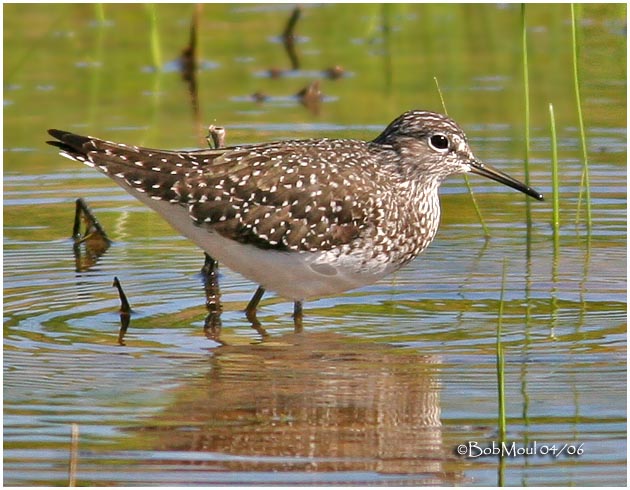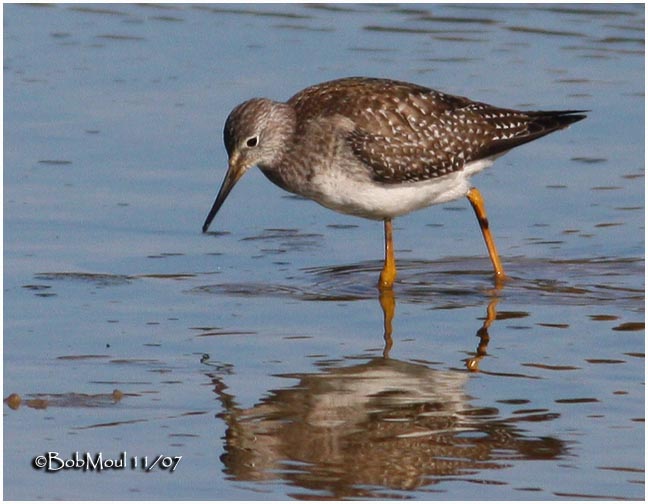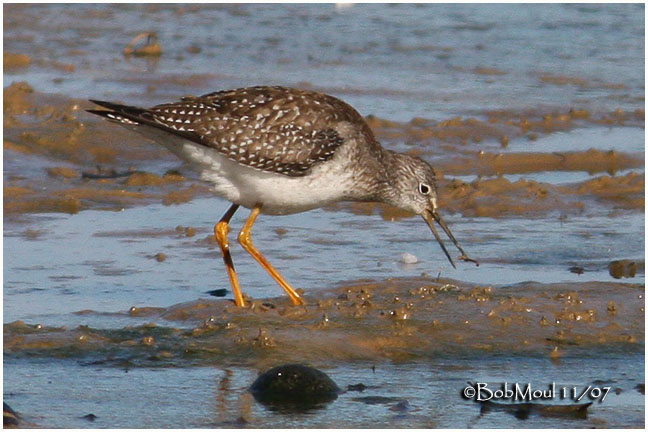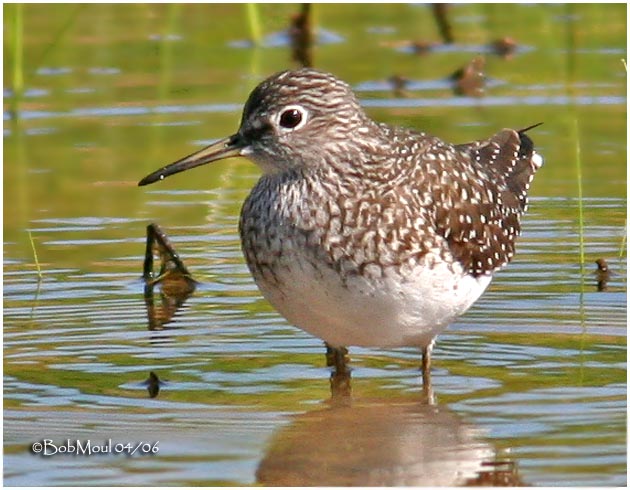
Solitary Sandpiper
Tringa solitaria
Charadriiformes Order - Scolopacidae Family
BIOMETRICS:
Length: 18-21 cm; Wingspan: 55-59 cm; Weight: 50 g

Adult winter and juvenile have head, neck and breast almost plain brown, hardly streaked, and wings coverts, mantle and scapulars dotted with small pale spots. Legs vary from dull olive to yellowish at all seasons.

VOICE: SOUNDS BY XENO-CANTO
Solitary Sandpiper has a call rather similar to that of Green Sandpiper, a sudden excited “peet” or “peet-weet-weet” when flushed, high-pitched.
HABITAT:
Solitary Sandpiper prefers the swampy margins of brackish pools, freshwater ponds and woodlands streams, and frequently far from the coast.
RANGE:
Solitary Sandpiper breeds in the wooded northland of Canada and Alaska. It winters from the southern states and the West Indies south, to central South America.
BEHAVIOUR:
Its name is most appropriate, for during its migration, it is often seen alone, or in small flocks.
Solitary Sandpiper is extremely alert, and often the first to give alarm calls if it perceives some threat. When it alarmed, it often flies straight up in the air to escape. This flight pattern is perhaps an adaptation to the closed wooded areas it inhabits.

It feeds and forages in shallow water and mud. It may use its feet to stir up small animals from the mud. It also gleans food from the ground, and probes into the substrate to find invertebrates.
Solitary Sandpiper bobs the front half of the body, up and down. It is a characteristic behaviour of this species.
Solitary Sandpiper is monogamous. During courtship, the male performs low-level display flights over the territory. These flights are accompanied by a high pitched, repetitive song.
It’s a long-distance migrant.
FLIGHT:
Solitary Sandpiper often keeps wings raised briefly after alighting. It flies straight up in the air to escape. The male performs low-level display flights. These flights are undulating. When flying, its wings are down-curved and stiff. When it lands, it bobs and teeters often.
REPRODUCTION:
Solitary Sandpiper nesting is not well known. But, this bird doesn’t nest on the ground like most shorebirds, but it finds an old abandoned songbird nest in a tree. The male finds the nest. The female reworks it, but it does not add any material, just arranges the lining.
The female lays 4 greenish or creamy, dark brown-marked eggs. Both parents help incubate, for about 23 to 24 days. We don’t know well, but the parents are not known to feed the young. They probably jump from the nest at an early age, and find their own food.
A single brood occurs per season.

DIET:
The diet of Solitary Sandpiper consists mostly of aquatic and terrestrial insects, and aquatic invertebrates, such as molluscs and crustaceans. It also occasionally eats spiders and frogs, worms and small fish. Young birds feed themselves, eating the same food as their parents.
PROTECTION / THREATS / STATUS:
Most of their breeding habitats remain intact, but logging in boreal forest is an increasing threat.
Fr: Chevalier solitaire
All : Einsamer Wasserläufer
Esp : Andarríos Solitario
Ital: Piro-piro solitario
Nd: Amerikaanse Bosruiter
Russe: Улит-отшельник
Sd: Amerikansk skogssnäppa
Photographs by Bob Moul
His website: Nature Photography
Text by Nicole Bouglouan
Sources:
HANDBOOK OF THE BIRDS OF THE WORLD Volume 3 by Josep del Hoyo-Andrew Elliott-Jordi Sargatal - Lynx Edicions - ISBN : 8487334202
FIELD GUIDE TO THE BIRDS OF NORTH AMERICA - National Geographic Society - ISBN: 0792274512
All About Birds (Cornell Lab of Ornithology)
Bird Web (Seattle Audubon Society)
What Bird-The ultimate Bird Guide (Mitchell Waite)
Wikipedia (Wikipedia, The Free Encyclopedia)